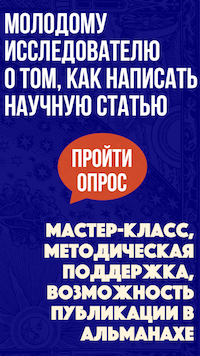МОЛОДЁЖНЫЙ ПРОЕКТ ДЛЯ ТЕХ, КТО ДЕЛАЕТ ПЕРВЫЕ ШАГИ В НАУКЕ
/components/bitrix/system.auth.form/auth_alm/images/login.gif) Войти
Войти /components/bitrix/system.auth.form/auth_alm/images/register.gif) Регистрация
Регистрация
Войти в корпоративную почту как автор/член редколлегии/рецензент журнала




Народы Гога и Магога в записках Плано Карпини и Гильома де Рубрука
Голосов Ф.В.
Народы Гога и Магога в записках Плано Карпини и Гильома де Рубрука
Голосов Фёдор Валентинович, ученик 8 класса школы № 1199 (Москва).
Монгольское нашествие XIII века воспринималось европейцами как приход народов Гога и Магога, предшествующий Апокалипсису. Автор сравнивает два описания «народов Гога и Магога», составленные посланными к монголам с дипломатической миссией францисканскими монахами, Плано Карпини и Рубруком.
Ключевые слова: народы Гога и Магога, монголы, Монгольская империя, средневековая Европа, францисканцы, Джованни Плано Карпини, Гийом Рубрук.
Golosov F.V. The People of Gog and Magog in the Notes of Plano Carpini and Guillaume De Rubruck
Fedor V. Golosov, pupil of 8th class, School No 1199 (Moscow)
Europeans perceived the Mongol invasion of the XIII century like the advent of the peoples of Gog and Magog, preceding the Apocalypse.
Author analyses 2 texts of European travelers at the Mongol (Tartaric) Empire (Giovanni da Pian del Carpine and Guillaume (William) de Rubruck). He tries to answers the question: “How did Europeans of the XIII century see the Mongols and their possible relationships?” He analyses the ideas and problems of travelers. He understands that both of authors went to the Tartary to preach, it was their main problem. Author finds the difference: Carpini wrote the military handbook to fight with Mongols, because he had wanted to protect Europe from there, but Rubruck wanted to spread influence of Catholic Church and to establish a mission. His text is practically a message to King Louis IX. Author understands that Carpini was afraid of Mongols and acted with discretion, but Rubruck is very self-confident and even rude to them. Author notices that Mongol threat, which had been very actual at Carpini’s time, become invisible at Rubruck’s time (10 years later).
Author notices that Carpini had thematic order of the chapters (it resembles a military handbook), but Rubruck had chronological order (it resembles a diary). Author thinks that Carpini tried to give a systematic description of the Mongols to the European public, but Rubruck shared his personal impressions to King. Author adds that Mongols themselves to travelers treated equally. They took an interest in them as people to unusual, but it did not feel any respect for them.
Keywords: the nations of Gog and Magog, Mongols, Mongol Empire, medieval Europe, the Franciscans, Giovanni de Piano Carpini, Guillaume de Rubruck.












